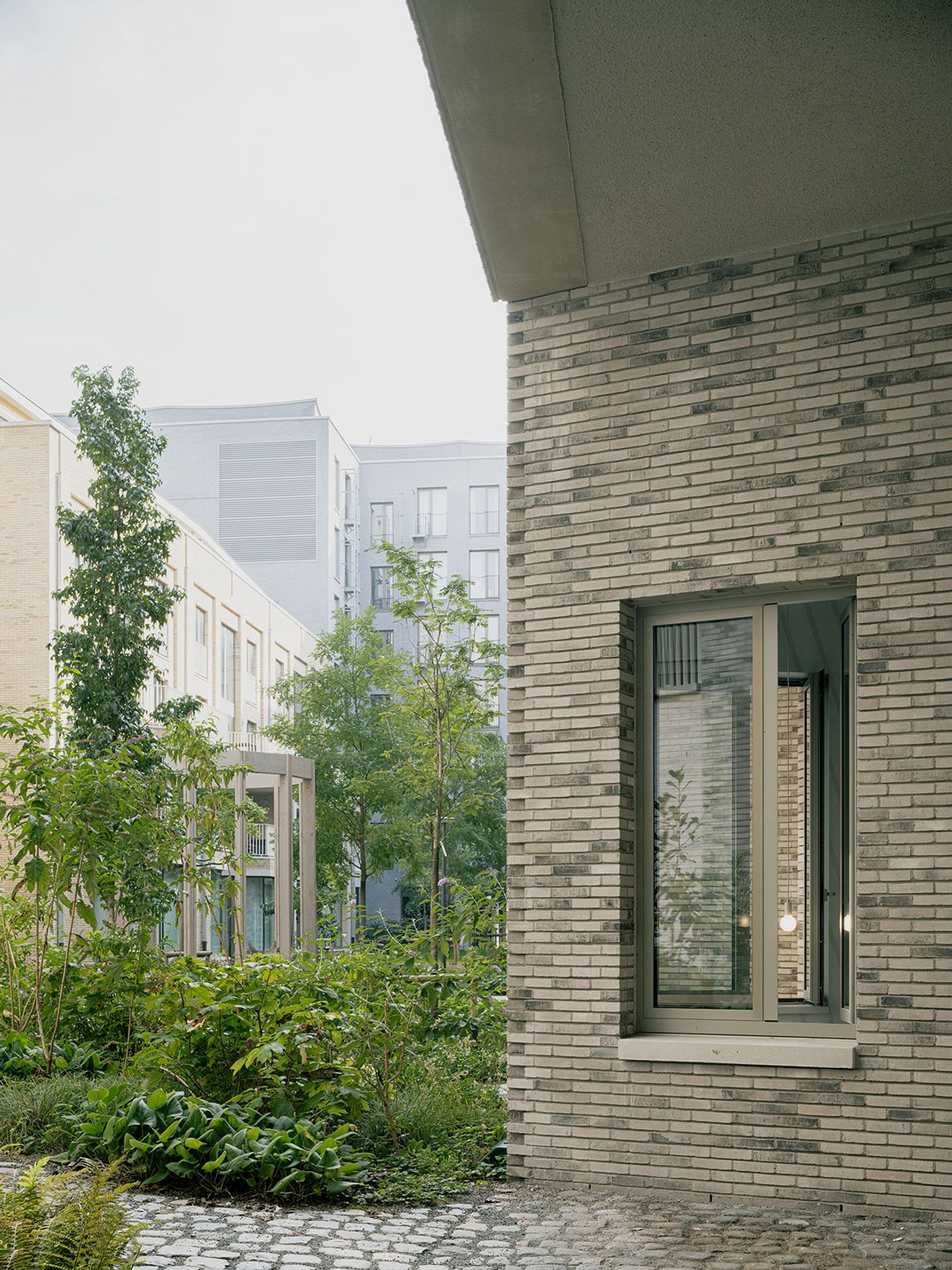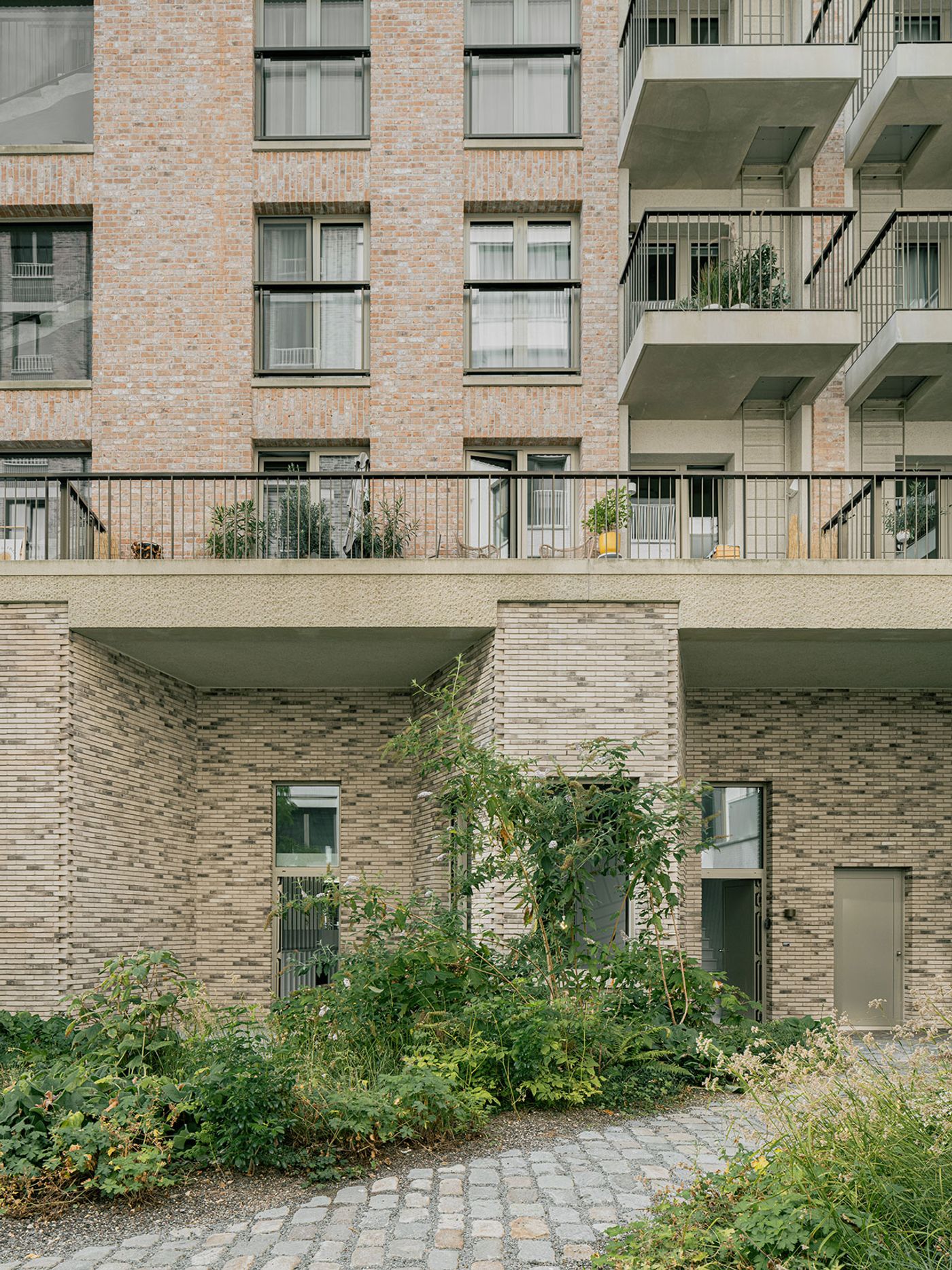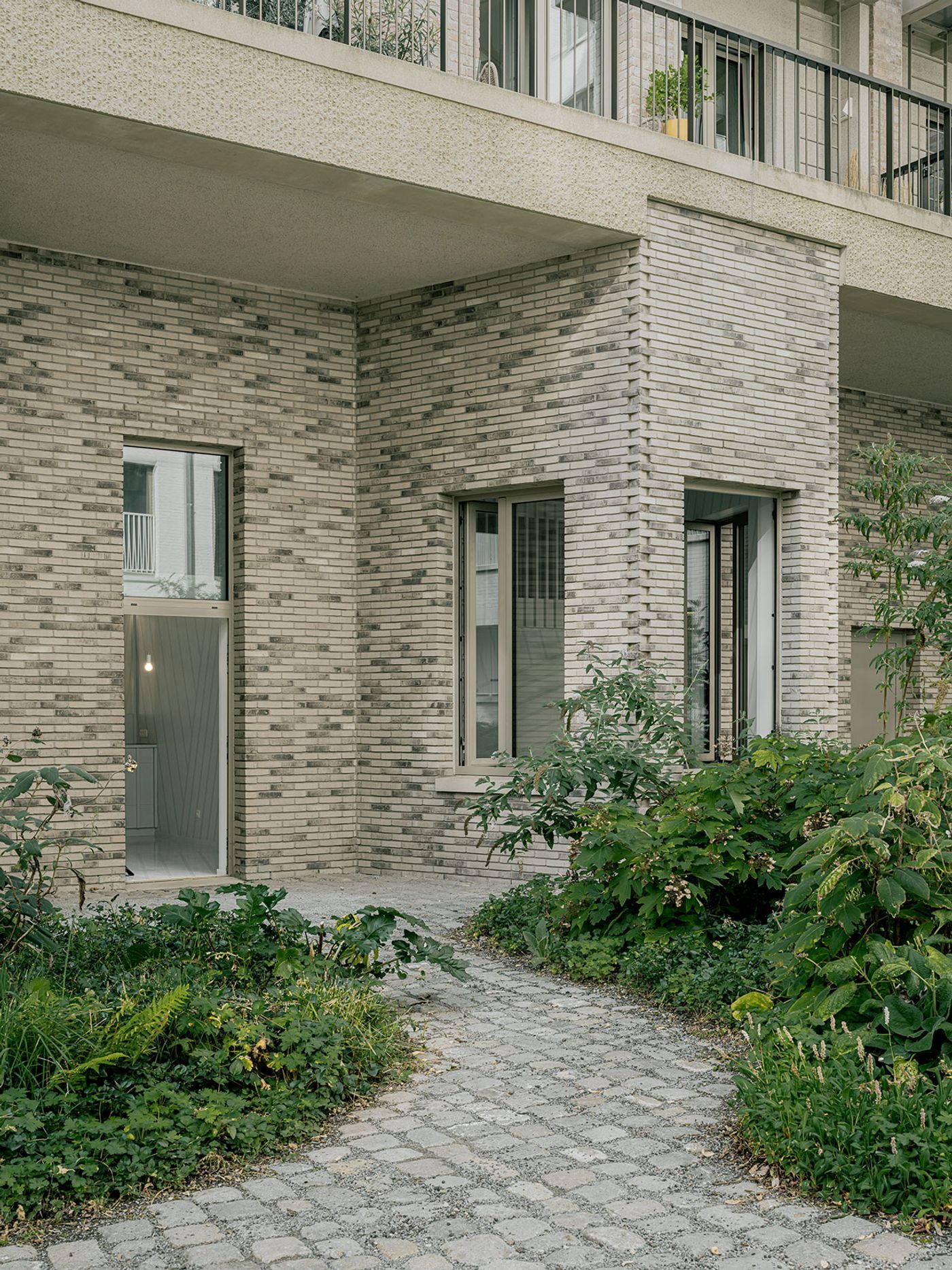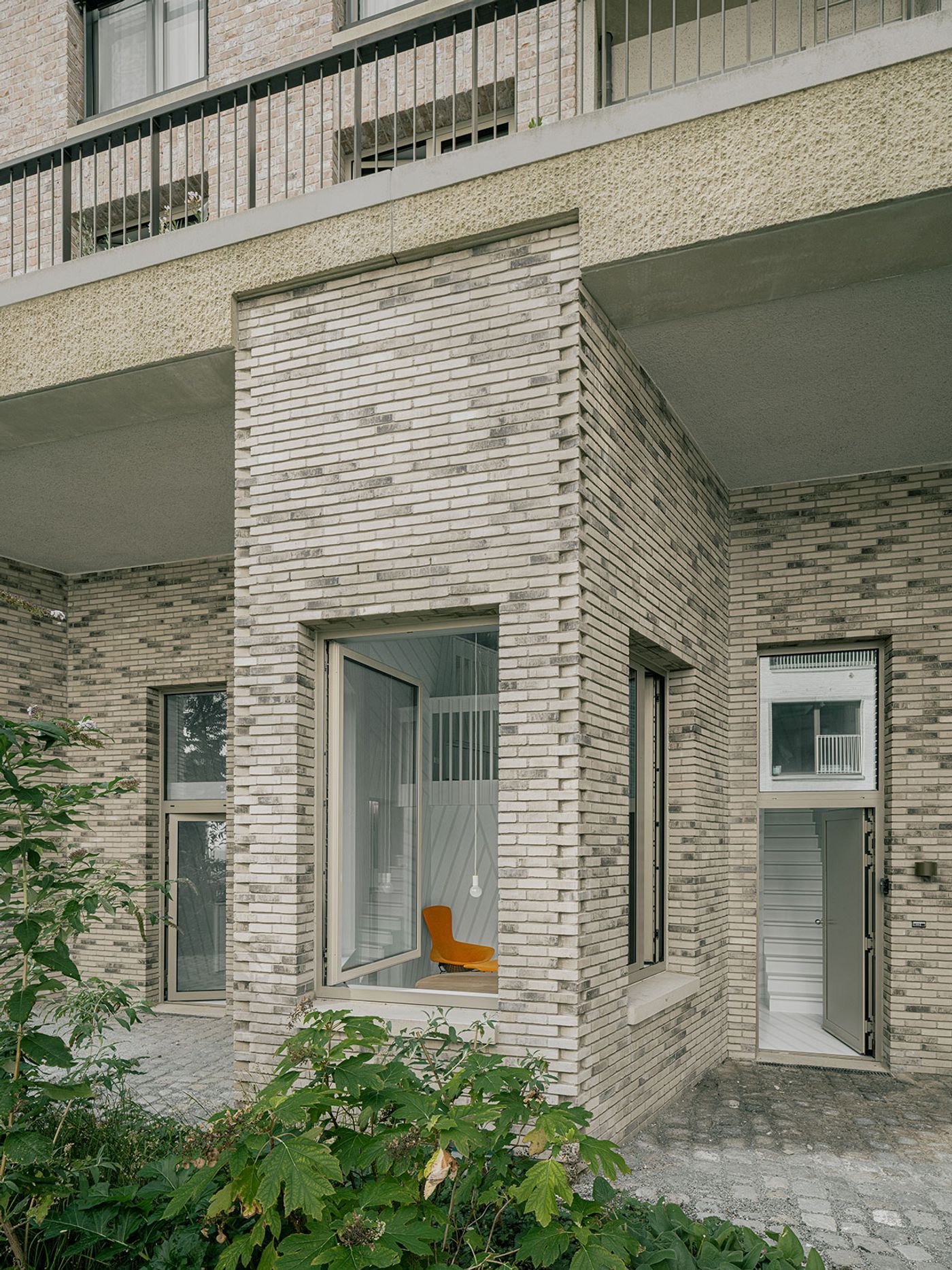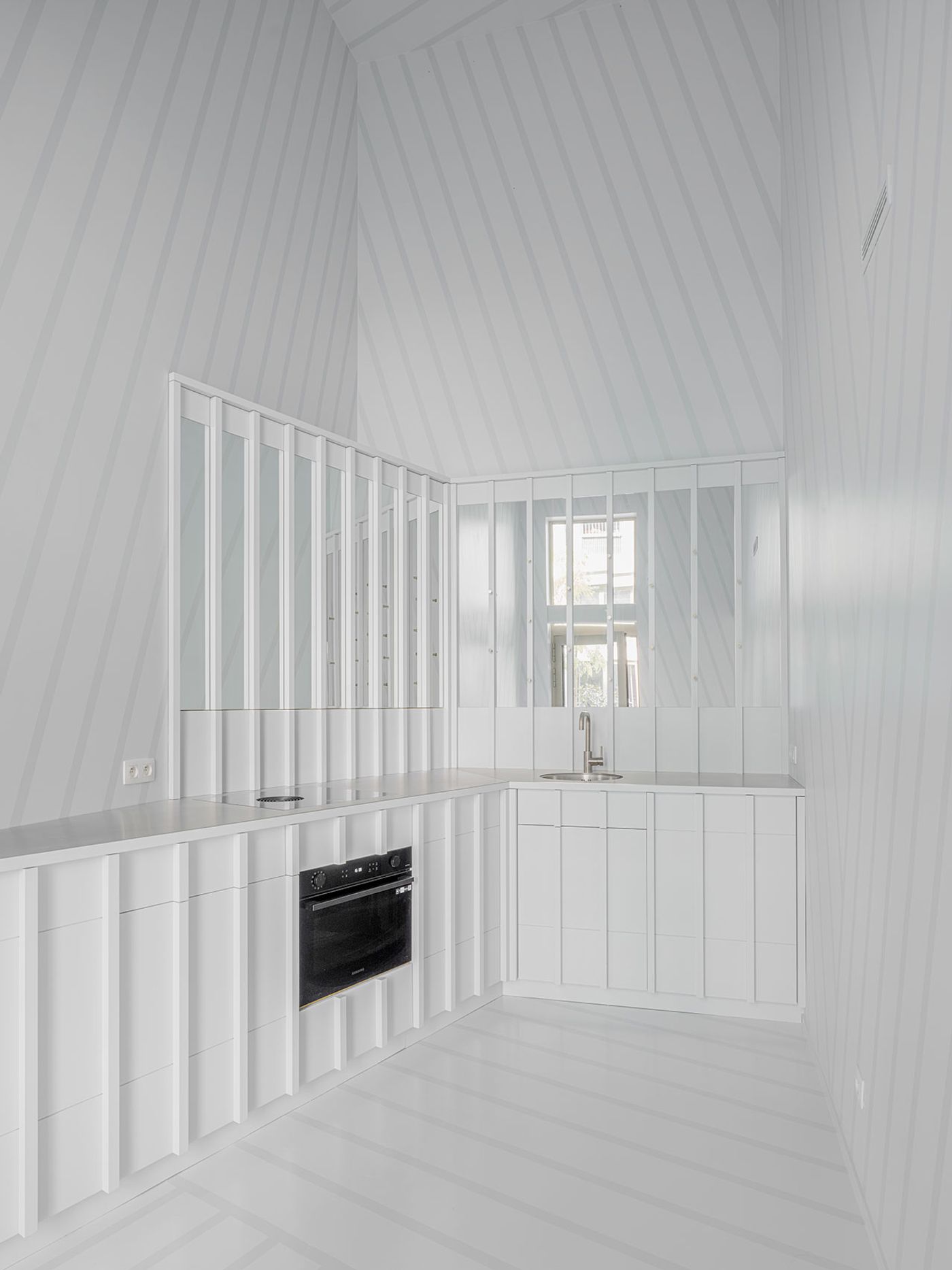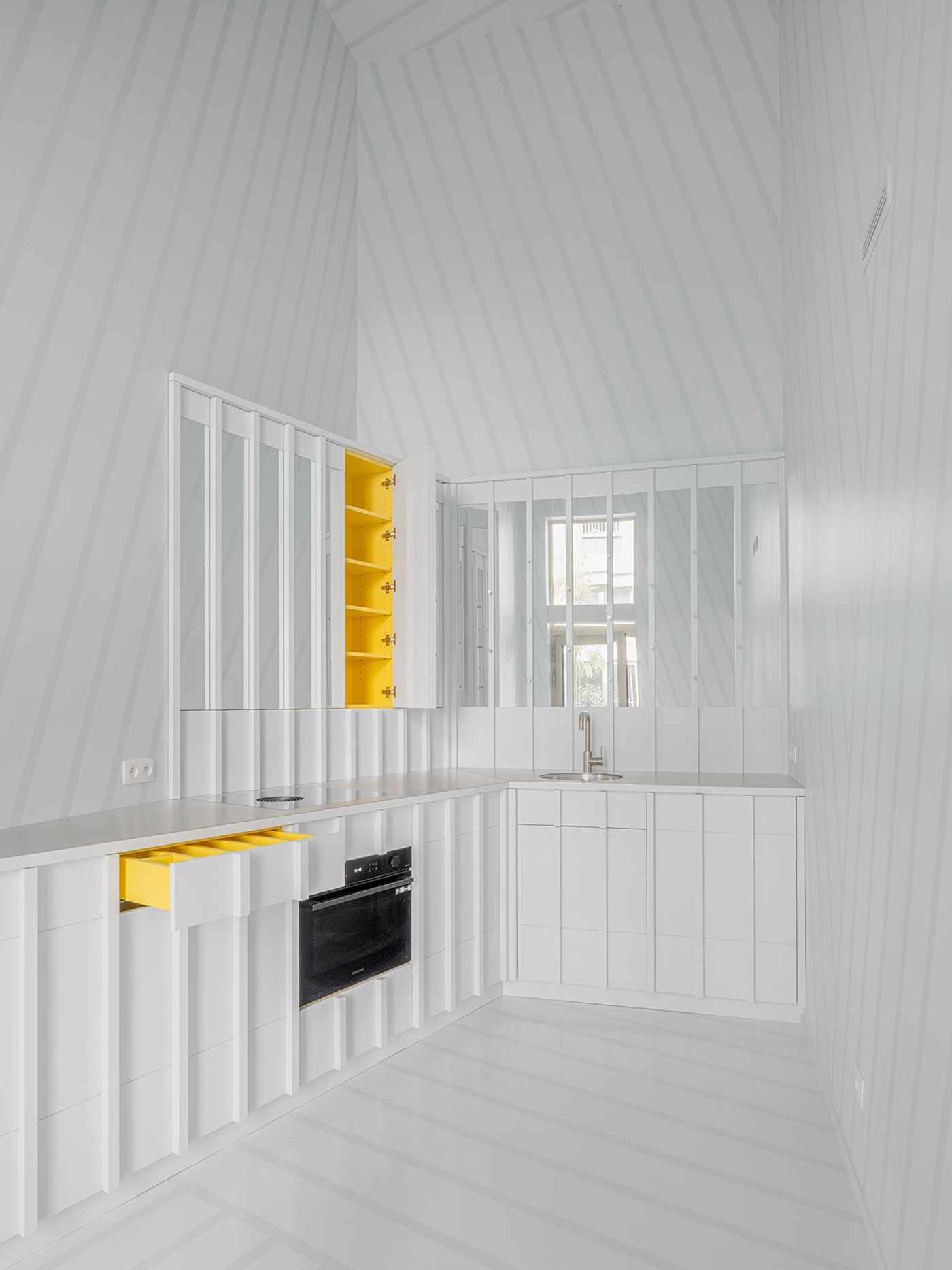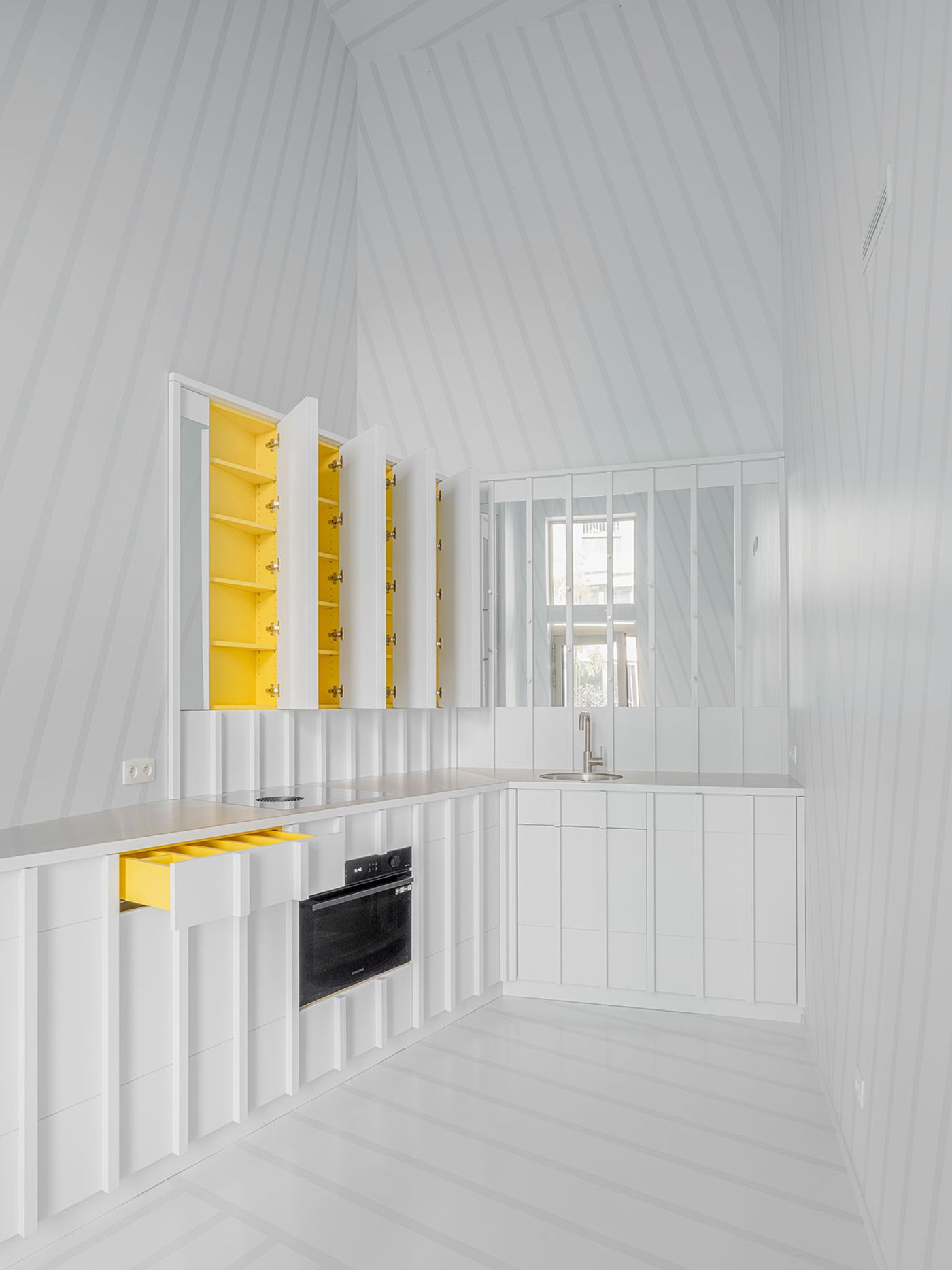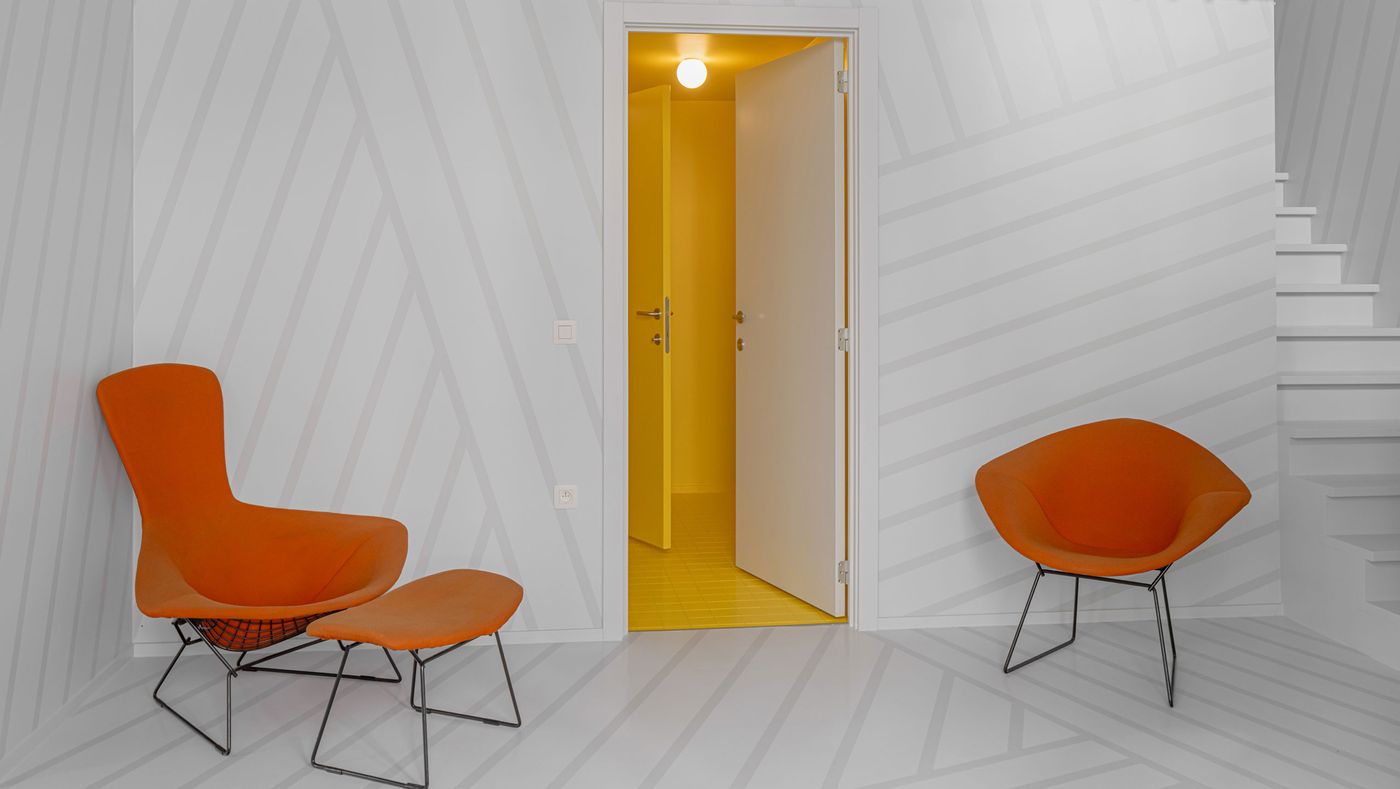
Bruno Spaas Architectuur Employ WWI-Era Ship Camouflage to Enhance a Studio Apartment in Antwerp
Words by Yatzer
Location
Antwerp, Belgium
Bruno Spaas Architectuur Employ WWI-Era Ship Camouflage to Enhance a Studio Apartment in Antwerp
Words by Yatzer
Antwerp, Belgium
Antwerp, Belgium
Location
Commissioned to design a compact studio apartment in a newly built waterfront development in Antwerp, local architects Bruno Spaas Architectuur drew inspiration from “Dazzle camouflage”, a type of camouflage used on military ships during the World War I, in order to increase a sense of spaciousness whilst injecting a sense of wonder. Swathed from top to bottom in a two-toned striped pattern in a variety of directions, entering the 50 square metre property gives the sense of stepping through the looking glass, made even more intense as the interior is directly juxtaposed against the more normalised world of the lush, brick-clad courtyard, part of the housing complex by London-based Sergison Bates architects, outside. The clever use of mirrors and surprising pops of yellow colour further enhance the scheme’s optical whimsy, ensuring that occupants of the short-term rental property enjoy a singularly uplifting experience.

Photo © Jeroen Verrecht.
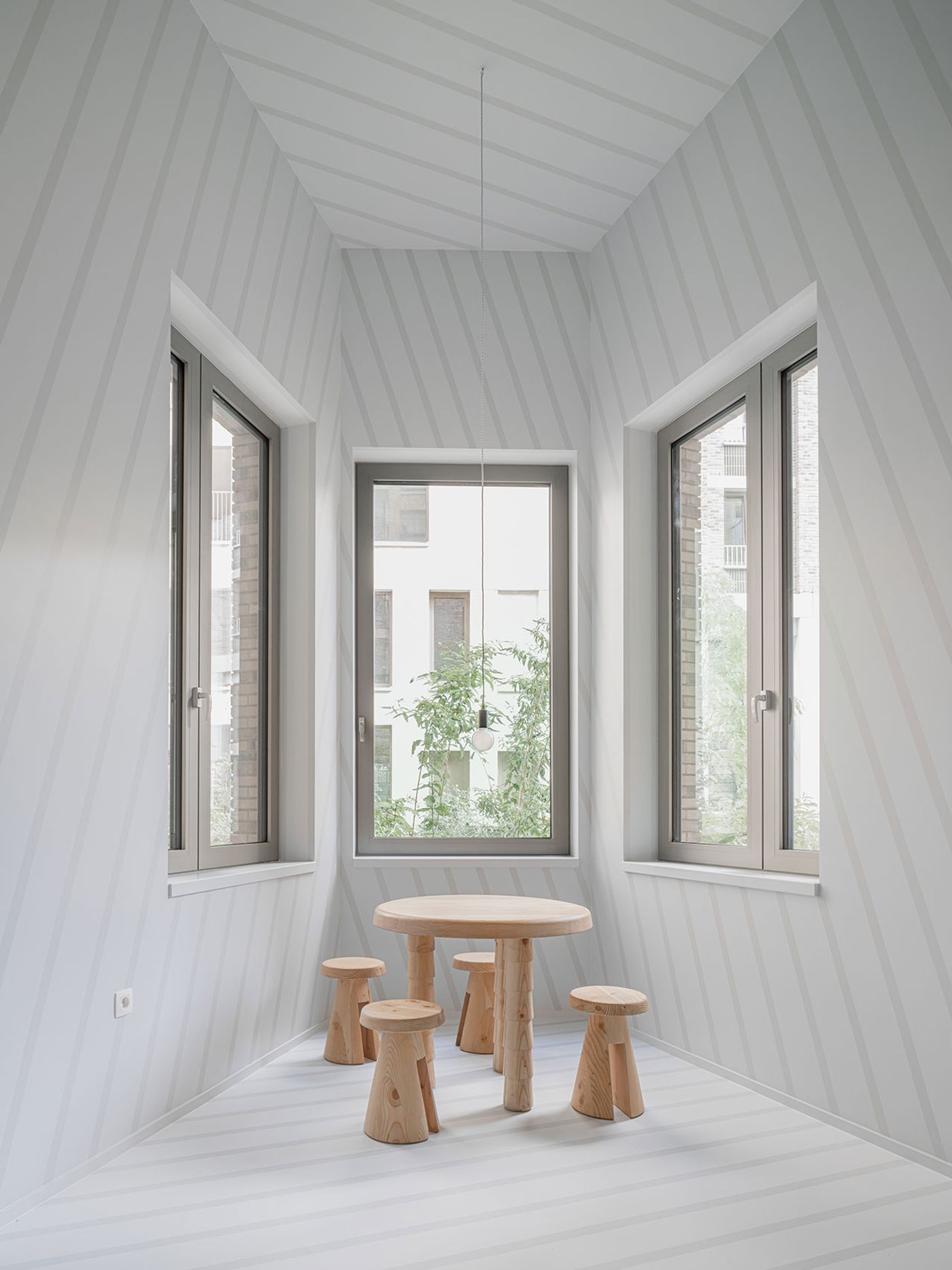
Photo © Jeroen Verrecht.
Optical illusions, also referred to as 'trompe l'oeil', have been a staple in architectural design since the Greeks began experimenting with how proportion, lines and angles are visually perceived—think of the Parthenon’s domed pedestal and ‘swelling’ columns. Over the centuries, artists and architects have fascinated and puzzled observers by creating structures and spaces that look different from their true forms. Suffice it to say that Bruno Spaas Architectuur’s imaginative use of the WWI-era Dazzle camouflage for this project presents a modern take on this concept.
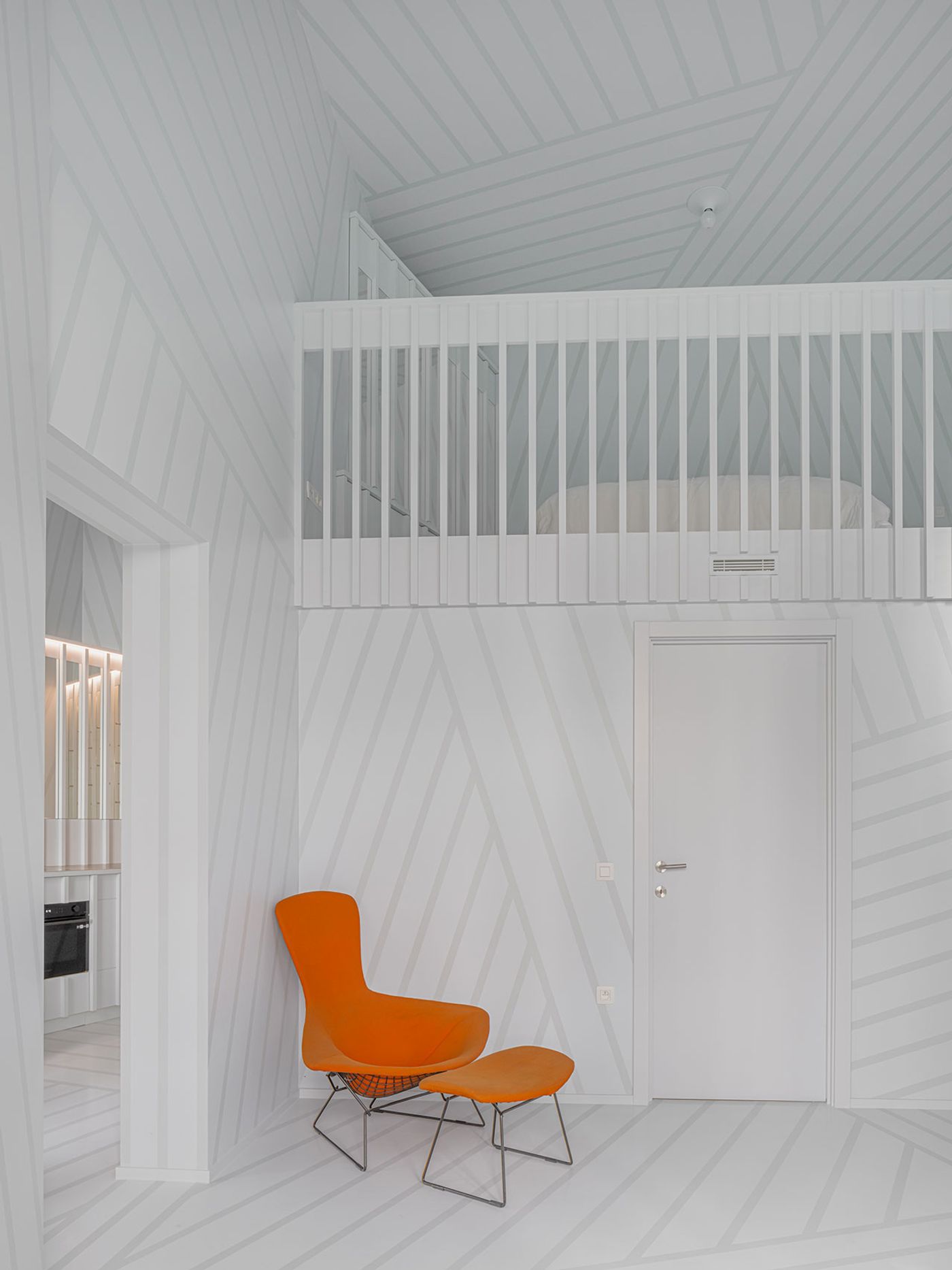
Photo © Jeroen Verrecht.
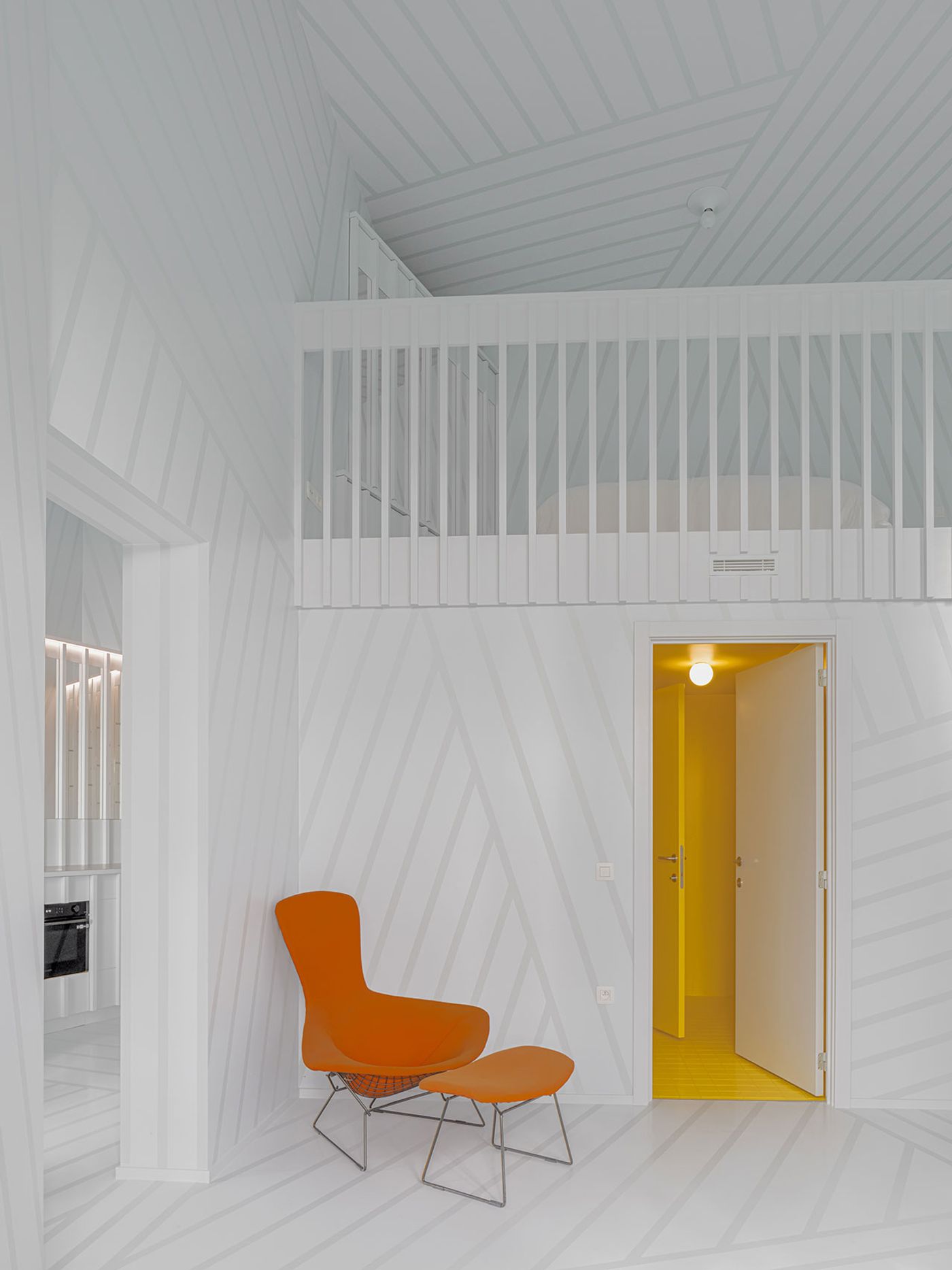
Photo © Jeroen Verrecht.
Underpinned by complex geometric shapes in contrasting colours, the intention behind using Dazzle camouflage was not to conceal but to make it difficult to estimate a target's range, speed and heading, not unlike the effect created by the patterned coats of animals such as the giraffe, zebra and jaguar. In the case of this apartment, which combines small rooms with five-meter-high ceilings, the irregular stripe pattern both subverts the spatial perception, making for example, the kitchen feel wider and the mezzanine higher and more spacious, and creates a unified atmosphere, painted as it is across floors, walls and ceilings. By toning down the colour contrast, opting for an almost monochromatic white and light grey combination as a counterpoint to the zany geometries, the team has also managed to create a calming environment.
Strategically positioned mirrors increase spaciousness and brightness, while an eye-popping warm yellow colour, used to paint the interior of the kitchen cabinets and wardrobes, as well as the entire bathroom and hallway, create surprising moments of pure delight that playfully animate the scheme’s minimalist starkness.
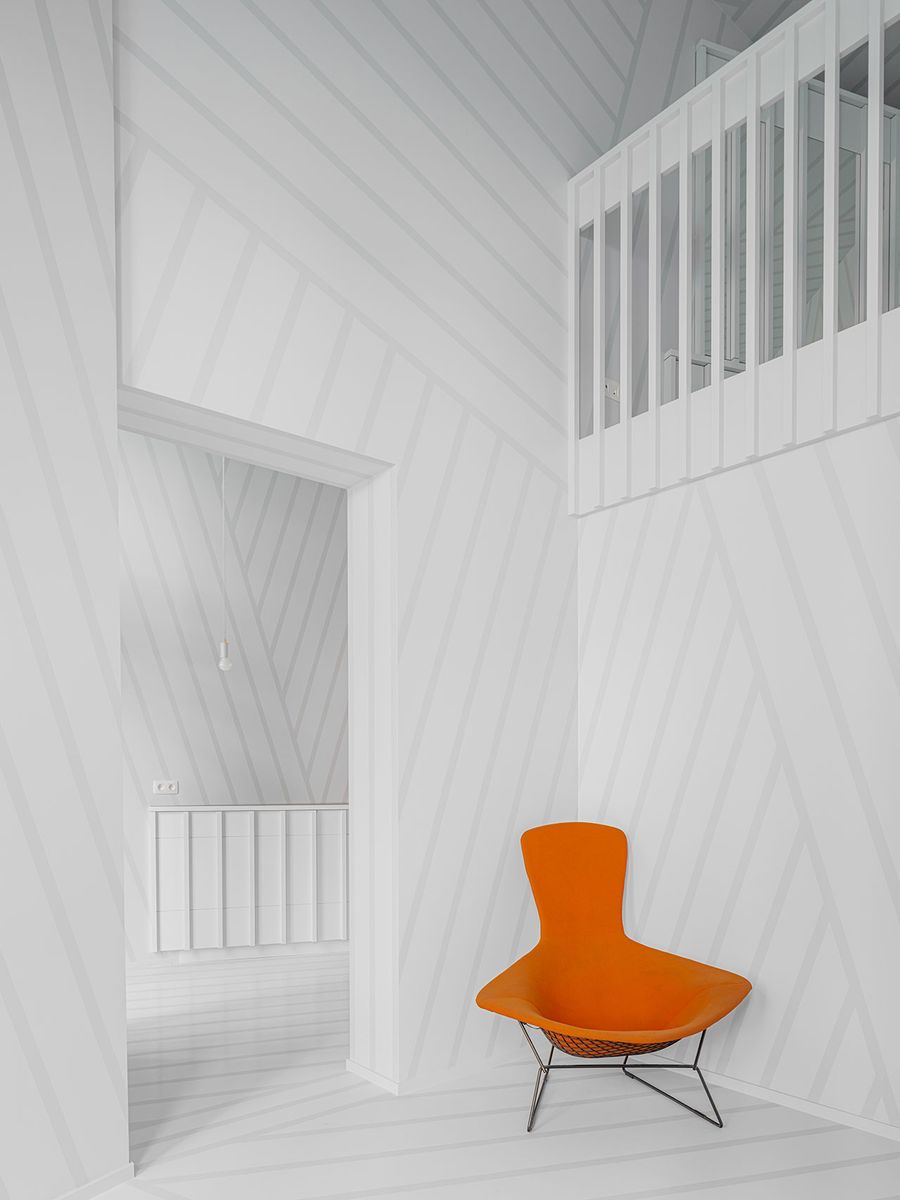
Photo © Jeroen Verrecht.

Photo © Jeroen Verrecht.

Photo © Jeroen Verrecht.
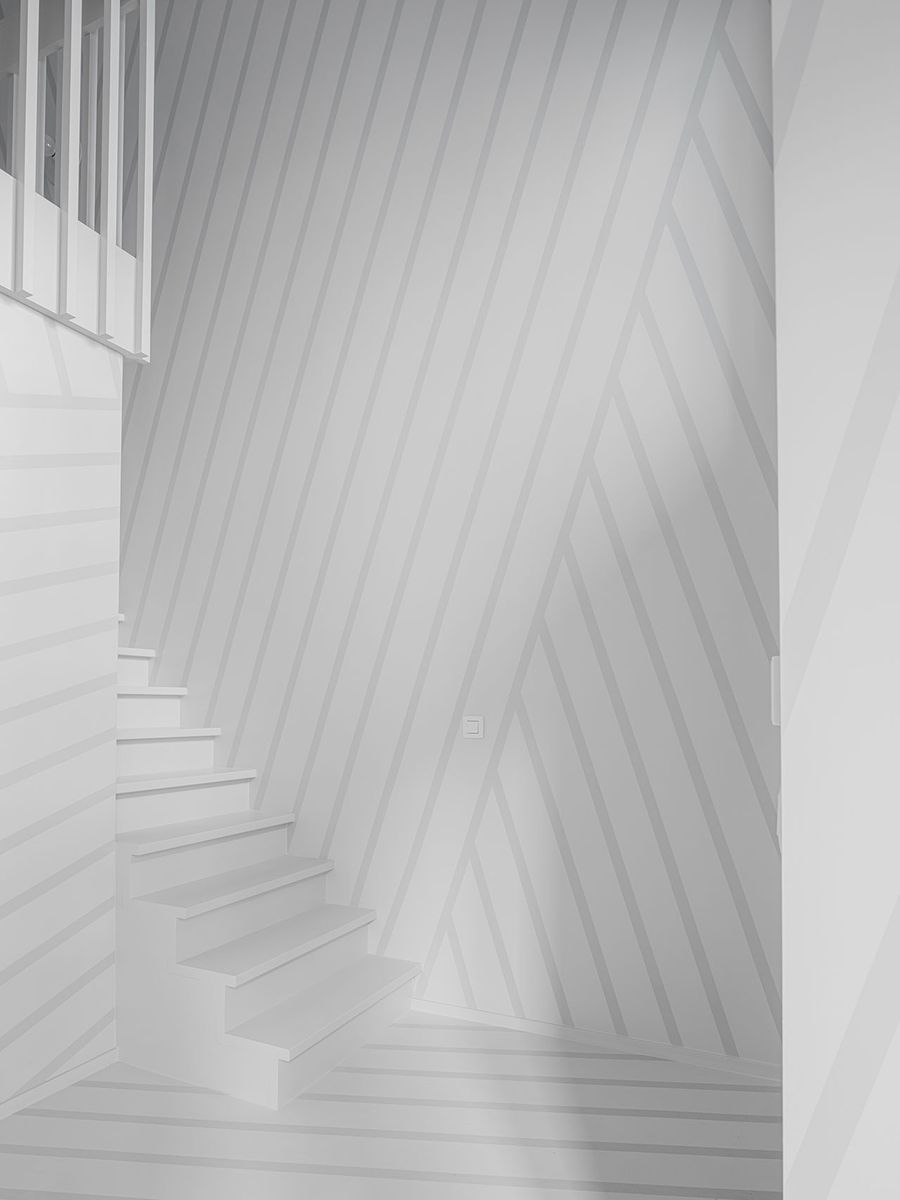
Photo © Jeroen Verrecht.
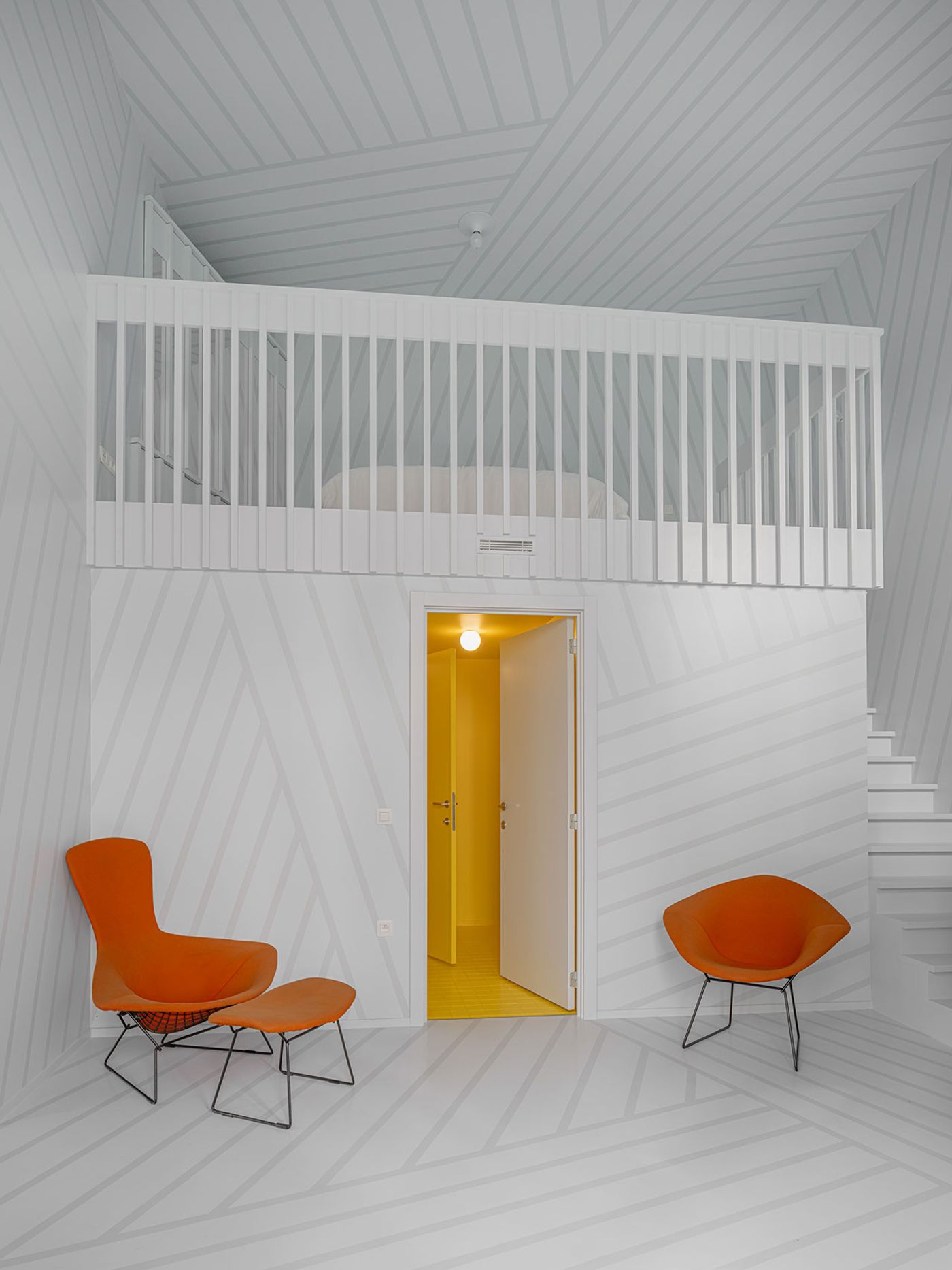
Photo © Jeroen Verrecht.
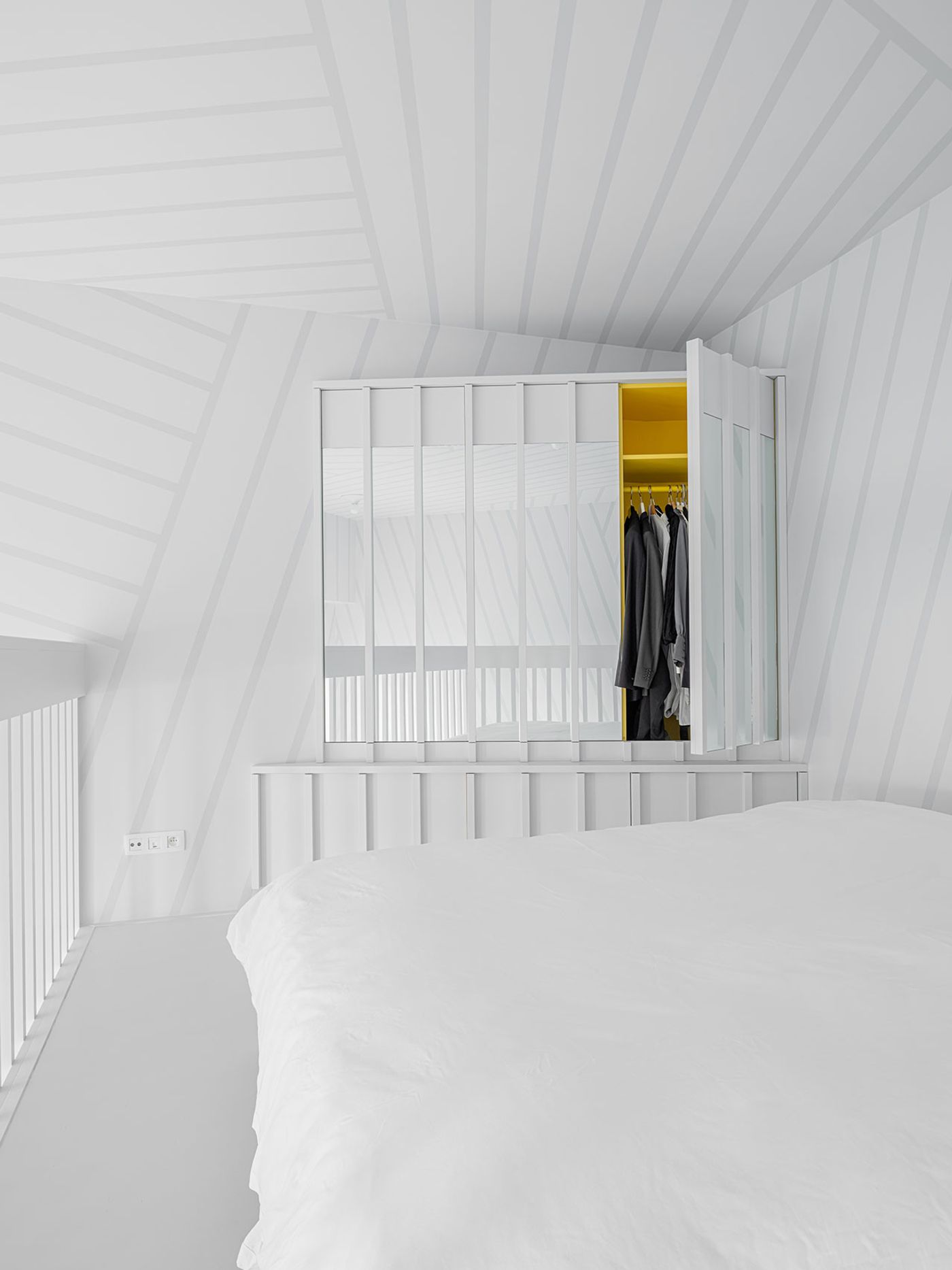
Photo © Jeroen Verrecht.
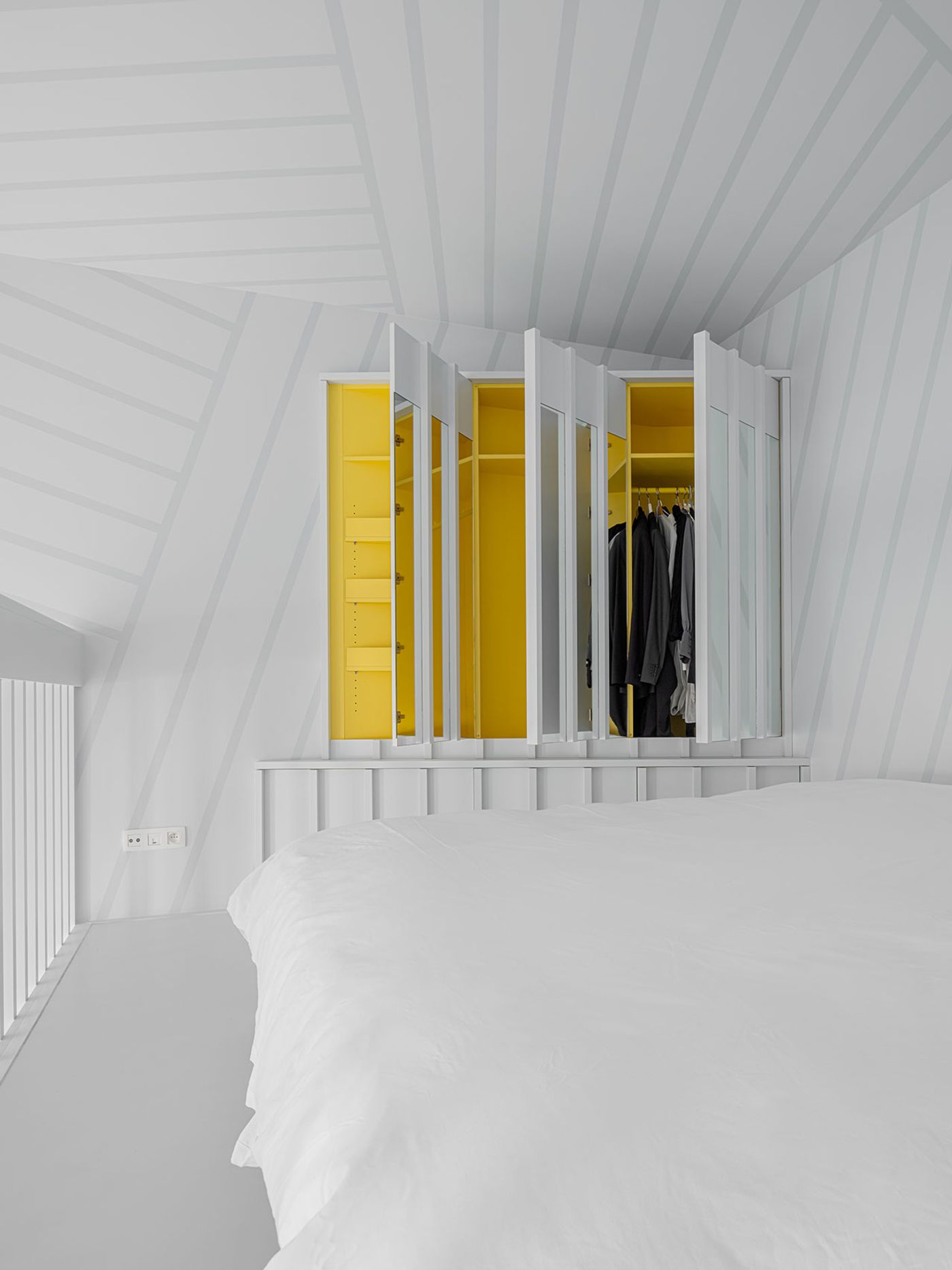
Photo © Jeroen Verrecht.
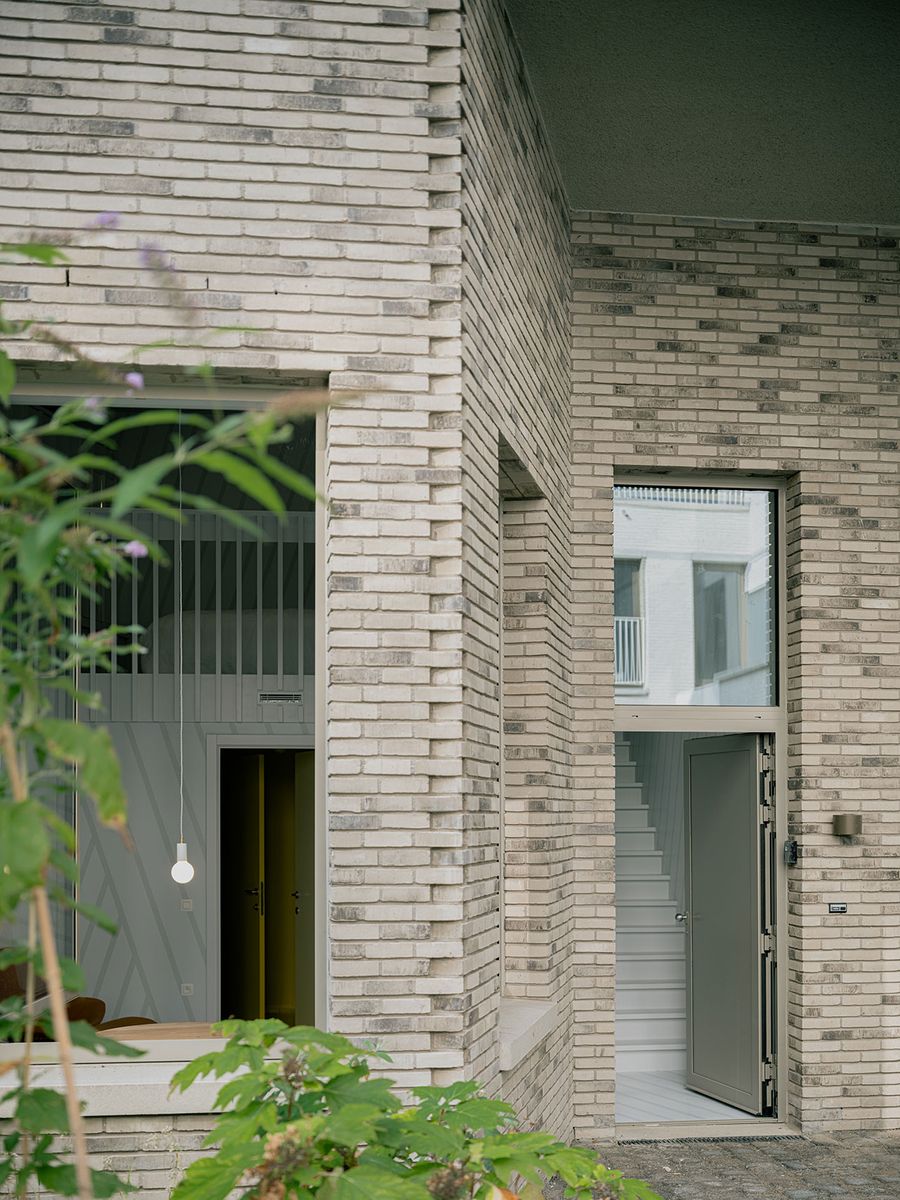
Photo © Jeroen Verrecht.
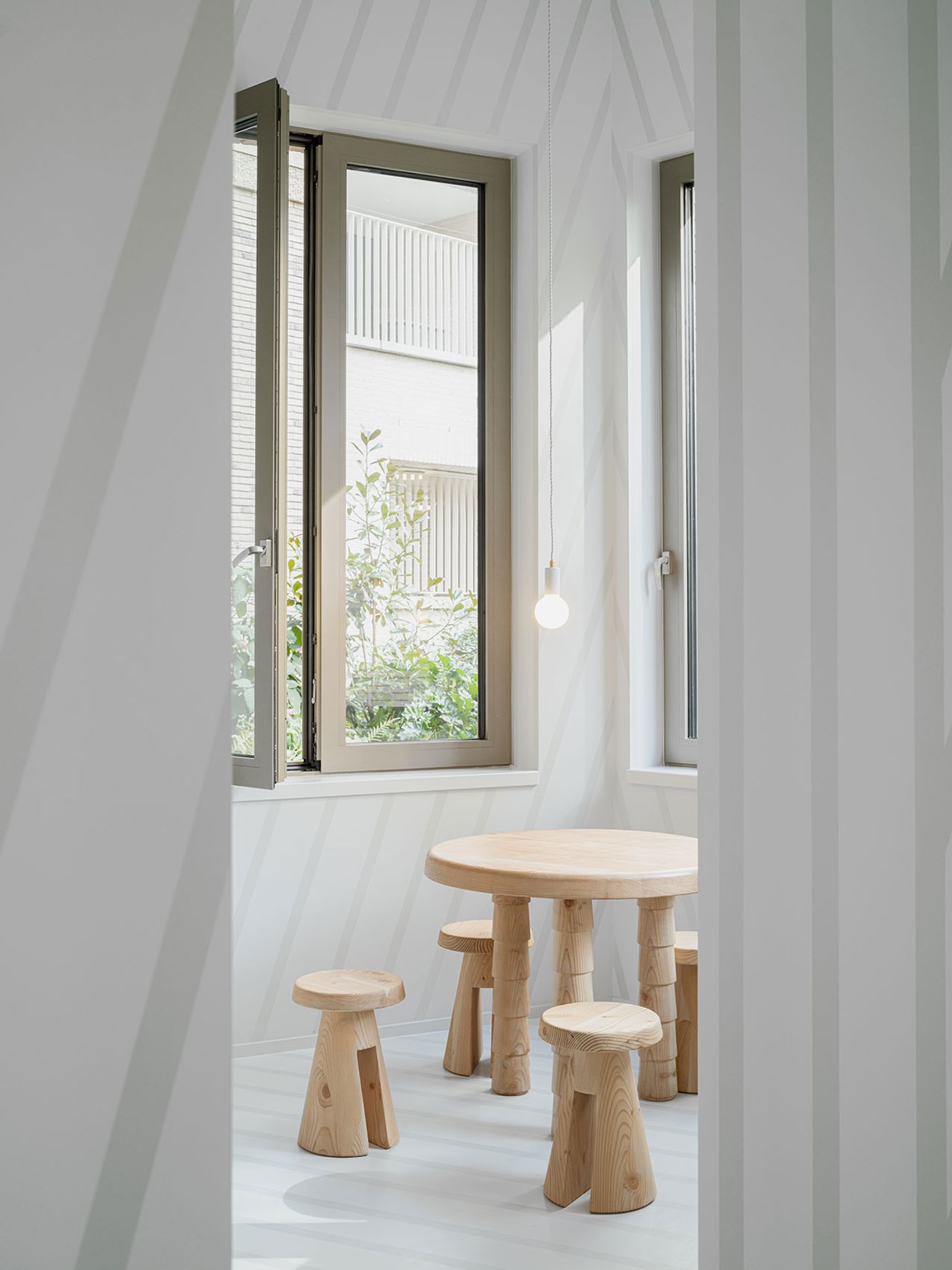
Photo © Jeroen Verrecht.
